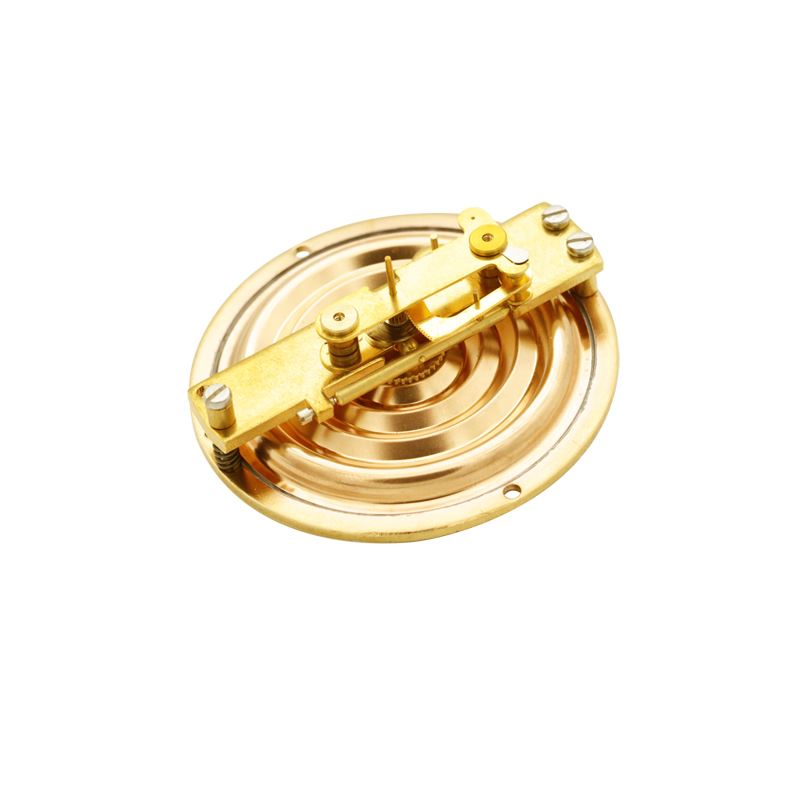
Dec . 09, 2024 18:38 Back to list
Differential Pressure Gauge System for Accurate Pressure Measurement and Monitoring
Understanding Differential Pressure Gauge Assemblies
A differential pressure gauge assembly is an essential tool used in various industrial processes to measure pressure differences between two points in a system. These assemblies are critical in applications ranging from HVAC systems, water treatment facilities, to oil and gas industries, playing a pivotal role in ensuring operational efficiency and safety.
What is a Differential Pressure Gauge?
At its core, a differential pressure gauge measures the difference in pressure between two different points. This type of gauge typically has two pressure ports, one connected to the high-pressure side of a process and the other connected to the low-pressure side. The gauge calculates the pressure differential, which can provide valuable insights into the flow dynamics of liquids and gases within pipes and other system components.
Components of a Differential Pressure Gauge Assembly
The assembly consists of several key components
1. Pressure Transmitter This device converts the pressure difference into an electrical signal. Many modern systems utilize piezoelectric or capacitive sensors for increased accuracy and sensitivity.
2. Display Unit The output from the transmitter is sent to a display unit, which can be a digital readout, an analog dial, or integrated into a larger control system. This allows operators to monitor the pressure in real time.
3. Isolating Valves To protect the gauge and facilitate maintenance, isolating valves are often included. These can be shut off to isolate the gauge from the system, allowing for safe servicing without interrupting the entire process.
4. Filters In applications involving fluids, filters can be necessary to prevent particulates from damaging the sensing element, maintaining the accuracy and longevity of the gauge.
differential pressure gauge assembly

5. Piping and Fittings The assembly includes various pipes and fittings that connect the gauge to the process system. This is critical for ensuring a leak-free and stable connection.
Applications and Importance
Differential pressure gauges are widely used in numerous applications. In HVAC systems, they monitor air or water flow rates, helping maintain efficient climate control and energy use. In filter monitoring, engineers can assess when a filter is loaded and requires cleaning or replacement by tracking the pressure drop across it.
In the oil and gas industry, understanding pressure differentials can help in determining the flow rates of hydrocarbons, which directly influences production efficiency and operational safety. Furthermore, in wastewater treatment, these gauges help in assessing the performance of filtration systems and clarifiers.
Benefits of Differential Pressure Measurement
The benefits of using differential pressure gauges in any system are extensive. Firstly, they provide a real-time view of process conditions, enabling prompt detection of any anomalies or inefficiencies. Secondly, by continuously monitoring the pressure difference, organizations can optimize their operations, ultimately leading to lower energy costs and reduced downtime.
Moreover, precise measurement of differential pressure can improve system reliability, prolong equipment life, and contribute to safer operational practices. With advancements in sensor technology, modern differential pressure gauges offer improved accuracy, reduced size, and enhanced functionality, making them an indispensable part of process control and monitoring systems.
Conclusion
In summary, differential pressure gauge assemblies are a vital component of modern industrial systems. Their ability to measure and report on pressure differentials enables users to optimize processes, ensure safety, and maintain efficiency. As industries continue to evolve and place greater emphasis on operational excellence, the role of differential pressure gauges will only become more significant. Understanding and correctly implementing these assemblies can lead to substantial benefits in productivity and system reliability.
-
High-Precision 5 Valve Manifold Differential Pressure Gauge Suppliers
NewsApr.29,2025
-
High-Precision Diaphragm Vacuum Pressure Gauges Manufacturers & Quotes
NewsApr.29,2025
-
Omega Differential Pressure Gauges High Accuracy & Durability
NewsApr.28,2025
-
Low Pressure Differential Pressure Gauges Precision Solutions & Quotes
NewsApr.28,2025
-
Digital Diaphragm Pressure Gaauge Precision Measurement & OEM Quotes
NewsApr.28,2025
-
Differential Pressure Gauge China Price High-Accuracy & Best Quotes
NewsApr.28,2025
